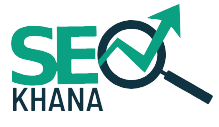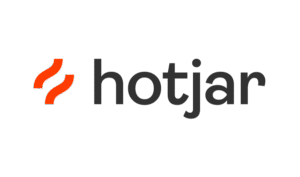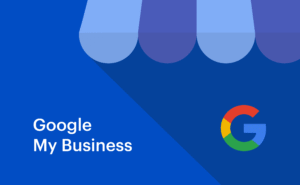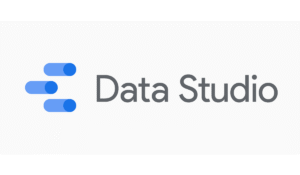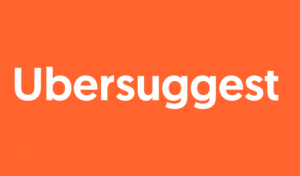In the competitive digital landscape, success is no longer about just having a website , it’s about truly connecting with your audience. At SEO Khana, we know that the magic lies in understanding user intent , the hidden key that unlocks your customers’ deepest needs and drives meaningful action. Imagine transforming every search query into an opportunity to engage, inspire, and convert. That’s the power of mastering user intent SEO.
Our mission at SEO Khana is to empower your business by decoding what is user intent and crafting SEO strategies that don’t just chase keywords, but deliver exactly what your users are searching for. Get ready to discover how aligning your content with user search intent can skyrocket your traffic, enhance user experience, and boost your sales like never before. Let’s dive in and unleash the full potential of your online presence!
What is User Intent?
When people use search engines, they’re not just typing random words,they have a specific goal or purpose in mind. This goal could be to find information, compare options, make a purchase, or even solve a problem. Understanding this underlying motivation is essential for creating content that truly meets their needs.
There are several distinct categories that describe these motivations. For example, some users are looking to learn more about a topic,they want detailed explanations, guides, or answers to their questions. Others are closer to making a decision and are comparing products or services, seeking reviews, prices, or features. Finally, there are those ready to take immediate action, such as buying a product, signing up for a service, or downloading software.
Recognizing these intentions helps marketers and website owners craft their pages in a way that aligns perfectly with what visitors want. Instead of just focusing on keywords or phrases, the emphasis shifts toward delivering relevant, valuable content that fits the visitor’s stage in the journey. This alignment not only improves user satisfaction but also enhances search engine rankings, as modern algorithms prioritize results that best serve the user’s purpose.
In essence, grasping what drives someone’s search behavior allows for smarter content creation, better targeting, and more effective digital marketing strategies overall.
What is User Intent in SEO?
In the realm of search engine optimization, understanding the purpose behind a user’s query is crucial for creating content that ranks well and satisfies visitors. When optimizing a website, it’s not enough to simply include popular keywords; the content must align with what the user hopes to achieve when performing a search.
Search engines have evolved to become smarter in interpreting the meaning and intent behind queries. They aim to deliver results that best match the user’s goal,whether that’s finding information, comparing products, or making a purchase. Optimizing with this in mind means tailoring your pages to meet those specific needs, ensuring visitors find exactly what they’re looking for.
By focusing on this approach, websites can improve their visibility, reduce bounce rates, and increase conversions. For example, a page designed to capture visitors with buying intent will be different from one meant to provide educational content. Recognizing these distinctions and structuring content accordingly is a cornerstone of effective SEO strategies today.
Ultimately, aligning your website’s content with the underlying goal behind searches leads to better user experience and higher search rankings, which is why it’s a fundamental aspect of modern optimization efforts.
Types of User Search Intent
Understanding the different categories of user search intent is essential for creating content that truly resonates with your audience. Each type reflects a distinct goal that users have when they enter a query, and tailoring your content accordingly can dramatically improve engagement and conversion rates.
Informational Intent
This type occurs when users are seeking knowledge or answers. They want to learn more about a topic, find tutorials, how-to guides, or detailed explanations. Content designed to satisfy this intent typically includes blog posts, articles, FAQs, and educational videos that provide valuable information without expecting an immediate purchase.
Navigational Intent
Here, the user’s goal is to find a specific website or brand. For example, typing “Facebook login” or “Nike official site” indicates they want to navigate directly to a known destination. Optimizing for navigational intent often involves ensuring your brand’s website ranks well for its name and common related searches.
Commercial Investigation Intent
Also referred to as commercial investigation intent, this type reflects users who are researching products or services but haven’t made a final decision yet. They might be comparing features, prices, or reviews. Content such as product comparisons, buyer’s guides, and detailed reviews is well-suited to address this stage.
Transactional Intent
This intent is displayed when users are ready to complete an action, usually a purchase or sign-up. They are looking for clear calls to action, product pages, or offers. Understanding transactional vs commercial intent is crucial because while commercial investigation users are still deciding, those with transactional intent are prepared to act immediately.
By recognizing these categories, businesses can better align their content strategies with what users want at each stage of their journey. This alignment not only improves user satisfaction but also boosts SEO performance by matching search engines’ expectations for relevance and usefulness.
What is the difference between transactional versus commercial intent?
In the journey of online searching and buying, users exhibit different intentions depending on how far along they are in their decision-making process. Two key types of intent that marketers need to understand are commercial intent and transactional intent. Although related, they represent distinct stages with unique characteristics.
Commercial Intent:
- Users are in the research phase.
- They seek information, reviews, and comparisons.
- Their goal is to evaluate options before making a decision.
- Example searches: “best smartphones 2025,” “Nike vs Adidas running shoes.”
Transactional Intent:
- Users are ready to take action, usually to purchase or convert.
- They look for buying options, deals, or direct links to complete transactions.
- Their focus is on convenience and quick completion.
- Example searches: “buy iPhone 15 online,” “order Nike running shoes.”
By recognizing these differences, businesses can create targeted content and user experiences that effectively meet users where they are in their buying journey, increasing engagement and conversion rates. Crafting strategic web SEO content tailored to each stage ensures your site speaks directly to user intent—building trust, improving rankings, and driving measurable results.
Matching Content to User Intent
One of the most effective ways to improve both user satisfaction and search engine rankings is by matching content to user intent. This means understanding the goal behind a user’s search and delivering content that precisely fulfills that need. When content aligns well with what users are looking for, they are more likely to stay longer, engage, and take the desired action.
For example, when matching blog posts with user intent, it’s important to consider the type of queries your audience uses. If the intent is informational, blog articles should focus on providing in-depth explanations, how-to guides, or answers to common questions. On the other hand, if the intent is commercial investigation, content might include product comparisons or buyer’s guides that help users evaluate options.
Creating content that directly responds to these different intents not only improves user experience but also signals to search engines that your website is relevant and authoritative. This approach enhances your visibility in search results and increases the likelihood of converting visitors into customers.
Ultimately, the key to successful SEO and content marketing lies in matching content to user intent at every stage of the customer journey, ensuring your message resonates and drives meaningful results.
How to Identify User Intent
Understanding what drives a user’s search behavior is essential for creating content that truly resonates and performs well in search engines. Identifying the underlying motivation behind a query involves a combination of research, analysis, and intuition. Here are some effective ways to determine user intent:
- Analyze Search Queries
Look closely at the keywords and phrases users type into search engines. Words like “buy,” “compare,” or “review” often indicate commercial or transactional intent, while queries starting with “how,” “what,” or “why” usually signal informational intent. - Examine SERP Features
Study the Search Engine Results Page (SERP) for your target keywords. The type of content Google displays, whether it’s blog posts, product pages, videos, or featured snippets, provides valuable clues about what users expect to find. - Use Analytics Data
Tools like Google Analytics and Search Console can show you how visitors interact with your content. High bounce rates might suggest a mismatch between your content and what users want, while longer session durations often indicate good alignment. - Consider the User’s Stage in the Buying Cycle
Determine whether users are just gathering information, comparing options, or ready to make a purchase. This helps tailor content to match their current needs and expectations. - Leverage Keyword Research Tools
Many SEO tools provide insights into search intent by categorizing keywords and suggesting intent-based groupings. This data can guide content strategy decisions. - Look at Competitor Content
Review what types of content rank for your target keywords. Competitors’ pages often reflect the dominant user intent and can inspire how to shape your own content.
By systematically applying these methods, you can gain a clear understanding of the motivations behind user searches, enabling you to craft highly relevant content that satisfies user needs and ranks effectively.
Tools to Help You Understand User Intent
Identifying the motivations behind user searches can be challenging, but fortunately, there are several powerful tools that can simplify this process and provide actionable insights to improve your content strategy:
- Google Search Console
This free tool from Google shows the queries that drive traffic to your site, the pages users land on, and how often your site appears in search results. Google Search Console Analyze this data helps you understand which keywords align with your content and reveals the intent behind user searches. - Google Analytics
By examining user behavior metrics such as bounce rate, session duration, and conversion paths, you can infer whether your content meets visitors’ expectations and intent. - Keyword Research Tools
Tools like Ahrefs, SEMrush, and Moz provide extensive keyword data, including search volume, competition, and related keywords. Many also categorize keywords by intent, informational, navigational, commercial, or transactional, making it easier to tailor your content. - Answer the Public
This tool visualizes common questions and phrases people search around specific topics. Answer the public tool especially useful for capturing informational intent and creating content that answers real user queries. - Google’s “People Also Ask” & Related Searches
Checking these sections on Google’s SERPs reveals related questions and topics users are interested in, giving clues about their intent and content gaps you can fill. - Competitor Analysis Tools
Tools such as SpyFu or SimilarWeb allow you to analyze competitor keywords and content strategies. Understanding what works for others can help you better target user intent in your niche. - ChatGPT and AI Tools
Advanced AI tools can simulate user queries and generate content ideas based on different types of user intent, helping you craft tailored and relevant content.
Using these tools collectively provides a comprehensive understanding of what your audience is looking for and enables you to match content to user intent more effectively.
How to Optimize for User Intent in SEO
Aligning your SEO strategy with the underlying goals of your audience is critical to driving relevant traffic and boosting engagement. Here’s how you can effectively optimize your website and content to satisfy different user motivations:
Conduct Thorough Keyword Research
Start by analyzing keywords not just for volume but for the intent behind them. Identify whether the queries are informational, navigational, commercial, or transactional. Use keyword tools to categorize and prioritize terms based on user goals.
Create Intent-Driven Content
Develop content tailored to each type of intent:
- For informational intent, produce in-depth articles, tutorials, and FAQs.
- For commercial investigation, create comparison guides, product reviews, and case studies.
- For transactional intent, focus on clear product pages, offers, and calls to action.
Optimize On-Page Elements
Ensure your titles, meta descriptions, headers, and URLs clearly reflect the content’s purpose and the user’s intent. This helps search engines and users quickly understand what the page offers.
Analyze Search Engine Results Pages (SERPs)
Study the top-ranking pages for your target keywords to see what type of content Google is rewarding. Align your content format and depth accordingly to match user expectations.
Improve User Experience (UX)
Fast-loading pages, mobile-friendly design, easy navigation, and clear calls to action contribute to satisfying user needs, reducing bounce rates, and increasing conversions.
Use Structured Data Markup
Implement schema markup to help search engines better understand your content’s context and intent, enhancing the chances of rich snippets and improved visibility.
Continuously Monitor and Adapt
Use analytics and search console data to track how well your content aligns with user intent. Adjust your strategy based on performance metrics, search trends, and evolving user behavior.
By focusing on these steps, you ensure your SEO efforts are not just about attracting visitors but about providing meaningful value that aligns with what users are truly seeking.
How SEO Khana Helps You Understand User Intent to Boost Search Rankings and Engagement
In the competitive world of digital marketing, simply having a website isn’t enough. What truly sets a business apart is its ability to connect deeply with its audience by understanding their needs and intentions. This is where SEO Khana, recognized as one of the best SEO companies, excels by focusing on unlocking the power of user intent to elevate your online presence.
At the core of SEO Khana’s approach is a comprehensive range of SEO services designed to analyze and interpret user search intent effectively. Whether your business is a local shop or a large E-commerce platform, their team of local SEO experts employs advanced strategies to tailor your website’s content and structure according to what your audience is actively looking for. This personalized optimization ensures that your site ranks higher on search engines and attracts visitors who are more likely to engage and convert.
One of the key services SEO Khana offers is the on-page SEO audit service, which thoroughly examines your website’s backend and frontend performance. This audit identifies any technical issues that might prevent your content from aligning well with user intent or hinder search engines from properly indexing your pages. Following this, they implement on page SEO optimization to enhance key elements such as meta tags, headings, URL structure, and internal linking building . These optimizations are carefully crafted to match the specific types of user intent, whether it’s informational, navigational, or transactional, maximizing both visibility and relevance.
By combining technical expertise with a deep understanding of consumer behavior, SEO Khana helps businesses create a seamless user experience that speaks directly to the searcher’s goals. This strategy not only boosts your search rankings but also increases engagement by delivering content that resonates and drives action, ultimately leading to higher conversion rates and sustained growth.
Conclusion
In conclusion, understanding the motivations behind user searches is no longer optional,it’s a fundamental component of any successful digital marketing and SEO strategy. When you focus on matching content to user intent, you create a more engaging and valuable experience that attracts the right audience and drives meaningful results. This alignment helps not only in improving search engine rankings but also in building trust and loyalty with your visitors.
To stay ahead in today’s competitive online landscape, it’s essential to continuously analyze and adapt to the evolving needs and goals of your audience. By crafting content that genuinely addresses what users are looking for, you position your brand as a reliable resource and increase your chances of converting visitors into customers. Embracing user intent as a core part of your SEO approach will pave the way for long-term growth and success.
Frequently Asked Questions (FAQs)
- What is the difference between user intent and search intent?
User intent refers to the overall goal a visitor has, while search intent focuses on the specific purpose behind a particular search query.
- How can I identify user intent through keywords?
By analyzing the keywords used,terms like “how” or “what” often indicate informational intent, whereas words like “buy” or “discount” suggest transactional intent.
- Why is understanding user intent important for SEO?
Because search engines aim to deliver results that best satisfy the user’s goal, optimizing for intent improves user experience and boosts your website’s rankings.
- What is the difference between commercial intent and transactional intent?
Commercial intent involves researching and comparing products or services, while transactional intent means the user is ready to make a purchase or complete an action.
- How can I match content to user intent effectively?
By understanding the user’s goal and creating content tailored to that,whether it’s informative articles, product reviews, or purchase pages.
- Are there tools to help analyze user intent?
Yes, tools like Google Analytics, Google Search Console, and various keyword research platforms provide valuable insights into user behavior and intent.
- Does user intent change over time?
Yes, intent can evolve depending on where the user is in the buying cycle or changes in their needs and interests.
